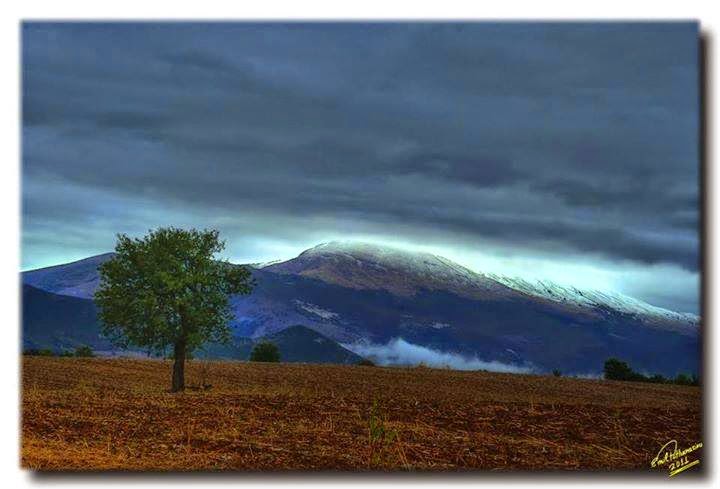Drama is a city and municipality in northeastern Greece. Drama is the capital of the regional unit of Drama which is part of the East Macedonia and Thrace region.
The town (pop. 44,823 in 2011) is the economic center of the
municipality (pop. 58,944), which in turn comprises 60 percent of the
regional unit's population. The next largest communities in the
municipality are Choristi (pop. 2,725), Χiropótamos (2,554), Kallífytos (1,282), Kalós Agrós (1,178), and Koudoúnia (996).
Built at the foot of mount Falakro, in a verdant area with abundant water sources, Drama has been an integral part of the Hellenic world since the classical era; under the Byzantine Empire, Drama was a fortified city with a castle and rose to great prosperity under the Komnenoi as a commercial and military junction.
In the modern era, tobacco production and trade, the operation of the railway (1895) and improvement of the road network towards the port of Kavala, led to an increase in the population of the city and to the enhancement of commercial activity.
Drama hosts the "Eleftheria", cultural events in commemoration of the city's liberation, at the end of June or beginning of July, and an annual film festival in September.






On 29 September 1941, in response to local communist guerrilla attacks against the Bulgarians in the villages of Drama, the Bulgarian occupation forces applied harsh reprisals in Drama, Doxato and several villages like Choristi, Kyrgia, Koudounia and Prosotsani.
On 4 March 1943, after midnight, the Bulgarian military authorities rounded up the Jewish population across their zone of occupation in eastern Macedonia and Thrace. The 4,000-strong community, including 589 Jews from Drama, was carried by train into Bulgarian territory and assembled in the tobacco warehouses that were empty this time of year. From there, the Jews were taken by train to the extermination camp of Treblinka. No one of the 589 Jews from Drama came back.
There is a modern ski resort on Mount Falakro. Drama also hosts an annual short film festival.
Must see attractions
Mount Falakro
Built at the foot of mount Falakro, in a verdant area with abundant water sources, Drama has been an integral part of the Hellenic world since the classical era; under the Byzantine Empire, Drama was a fortified city with a castle and rose to great prosperity under the Komnenoi as a commercial and military junction.
In the modern era, tobacco production and trade, the operation of the railway (1895) and improvement of the road network towards the port of Kavala, led to an increase in the population of the city and to the enhancement of commercial activity.
Drama hosts the "Eleftheria", cultural events in commemoration of the city's liberation, at the end of June or beginning of July, and an annual film festival in September.



Name
Archaeological finds show that in the area of the modern city there used to be an ancient Greek settlement named Dyrama (Greek: Δύραμα) or alternatively Hydrama (Greek: Ύδραμα), both meaning "rich in water". Some scholars associate Drama with the ancient Greek Drabescus (Greek: Δράβησκος). Hydrama was notable as the place of worship for many Gods of classical Greek mythology, especially Apollo and Artemis. With the passage of time Dyrama became Drama. In the South Slavic languages, the city is known as Драма which is itself a transliteration of the Greek name.History
Drabescus was part of the Roman and Byzantine Empires along with the rest of Greece. The region was conquered by Ottoman Empire in 1371. In the 19th century, the town became centre of the Sanjak of Drama. In 1912 during the First Balkan War, Drama was taken from the Ottomans by Bulgarian troops. Subsequently, in 1913 as a result of the Treaty of Bucharest, following the Second Balkan War, it was incorporated into Greece along with the rest of eastern Macedonia.World War II
Drama was occupied by Bulgarian troops in the wake of the German invasion of Greece, from 1941 to 1944 during World War II.On 29 September 1941, in response to local communist guerrilla attacks against the Bulgarians in the villages of Drama, the Bulgarian occupation forces applied harsh reprisals in Drama, Doxato and several villages like Choristi, Kyrgia, Koudounia and Prosotsani.
On 4 March 1943, after midnight, the Bulgarian military authorities rounded up the Jewish population across their zone of occupation in eastern Macedonia and Thrace. The 4,000-strong community, including 589 Jews from Drama, was carried by train into Bulgarian territory and assembled in the tobacco warehouses that were empty this time of year. From there, the Jews were taken by train to the extermination camp of Treblinka. No one of the 589 Jews from Drama came back.
Economy
In the recent past the economy of the Drama area relied heavily on the local paper and textile-clothing industries. However, these industries have either closed down or moved across the border to Bulgaria,[11] because of the low demands of the Bulgarian workforce,[12] with a negative impact on the local economy and employment. The situation worsened after 2007, when Bulgaria was admitted to the EU, and local Greek businessmen moved to expand their operations there. Other sources of revenue include agriculture, consisting mainly of tobacco plantations, small-scale mining (particularly of marble) and forestry. Recently, there have been efforts to exploit the rich local natural environment and to develop ecotourism.There is a modern ski resort on Mount Falakro. Drama also hosts an annual short film festival.
Municipality
The municipality Drama was formed at the 2011 local government reform by the merger of the following 2 former municipalities, that became municipal units (constituent communities in brackets):- Drama (Choristi, Drama, Kallifytos, Kalos Agros, Koudounia, Livadero, Makryplagio, Mavrovatos, Mikrochori, Monastiraki, Mylopotamos, Nikotsaras, Xiropotamos)
- Sidironero (Sidironero, Skaloti)
Must see attractions
- A Macedonian Tomb of the Hellenistic years found in the city (near the Court square) is evidence that the area was inhabited during historic times.
- The Tomb Cluster from the Iron Age found in the area of the Drama Industrial Zone.T
- The Agia Varvara Park, an idyllic location in the city centre with fountains, small lakes and waterfalls, tavernas, an outdoor theatre and leisure venues. There you will see the traditional watermills and the multi-storey tobacco warehouses, reflecting in the waters of the Lake.
- The Anastasiadis Mansion (1876), faced with the famous local marble, which is one of the basic elements that helped the development of the whole area.
- The complex of the old schools (1907) on the crossroad of Perdika and Venizelou Streets.
- The renovated building of the oldest cinema/theatre of the city ("Olympia", 1913) opposite the Metropolis.
- The Municipal Art Hall "Eleftheria" housed in a renovated, traditional coffee shop of the City.
- The Agia Sophia Byzantine Church (10th century). Around the Church you can see the ruins of the Byzantine Walls originally built in the 10th century. Near the walls there is the Taxiarxhes Chapel, built during the Palaiologos Family era
- The Archaeological Museum, situated by the verdant Municipal Garden includes noteworthy finds from the area, dating from prehistoric until recent years. The mammoth tusk found at the entrance of Maara Cave (Aggitis Springs) is particularly interesting.
- The Ecclesiastical Museum, housed in a modern wing of the Bishop's Mansion includes objects of ecclesiastical art.
- The Korylovos Hill covered by pine-trees, with a tourist pavilion, sports facilities and a marvellous view.
Mount Falakro

















































































































Δεν υπάρχουν σχόλια:
Δημοσίευση σχολίου